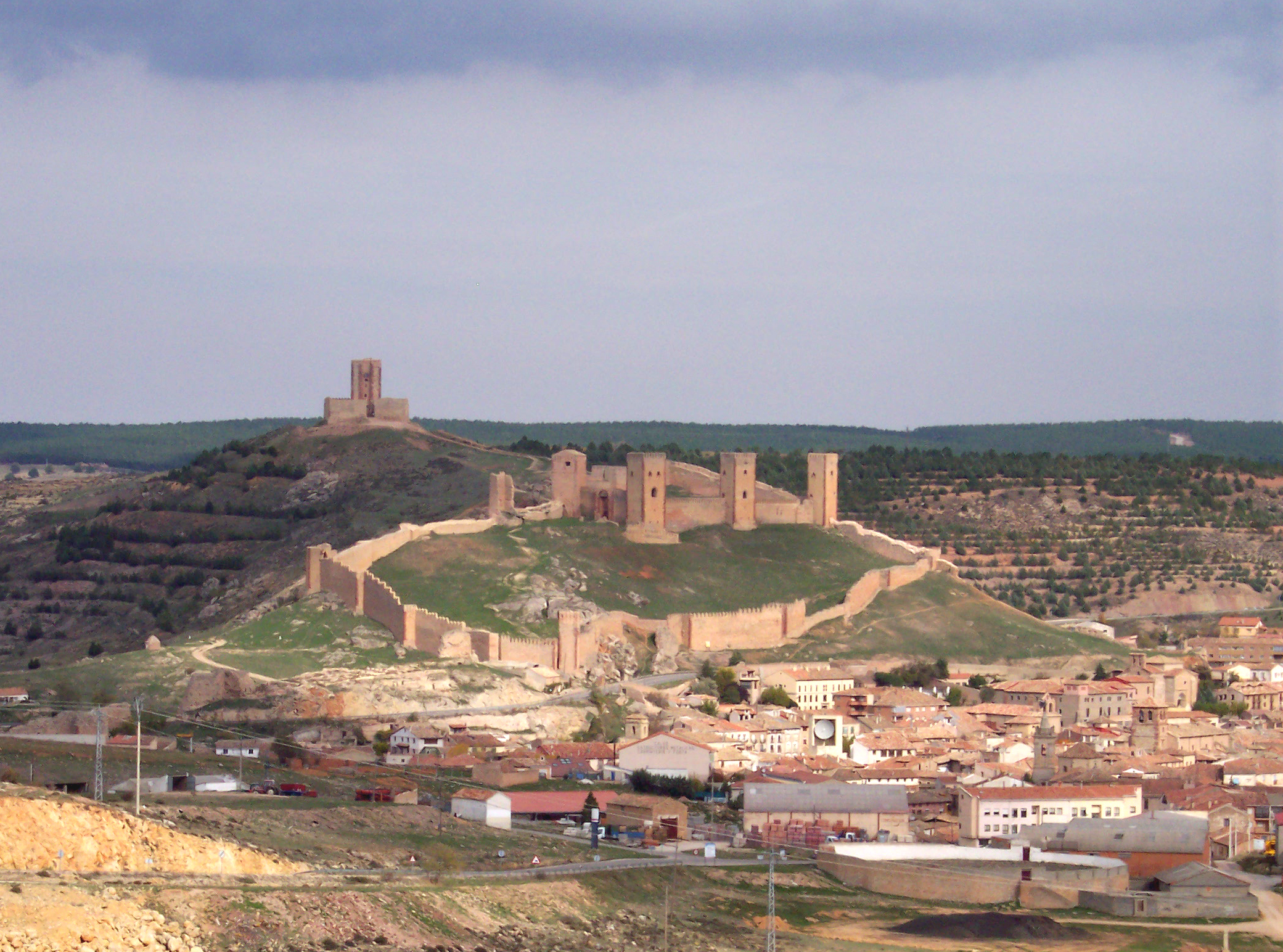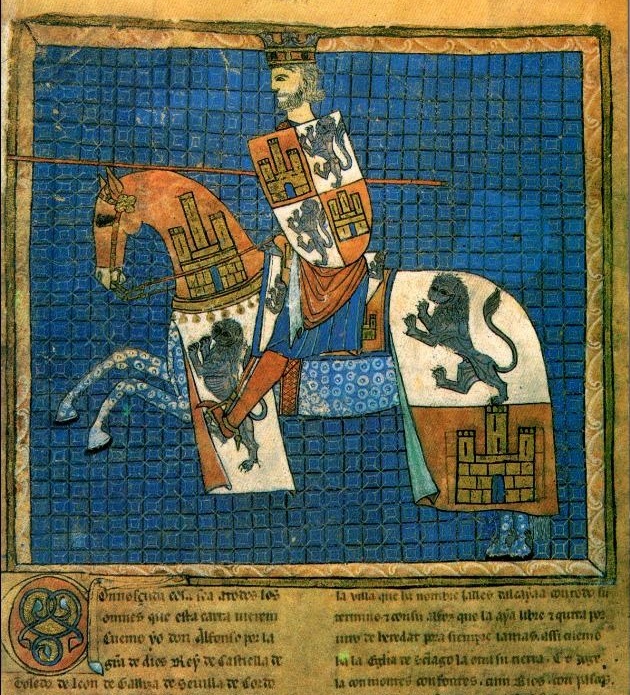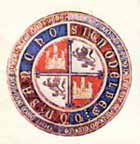|
Sancho Of Castile, Count Of Alburquerque
Sancho Alfonso of Castile (1342–1374), known in Spanish as ''Don Sancho Alfonso de Castilla'', was Infante of Castile, 1st Count of Alburquerque. He was born in Seville as the ninth of the ten illegitimate children of Alfonso XI of Castile and Leonor de Guzmán. He participated in a revolt of the Castilian nobles against the despotic rule of his brother, Peter of Castile. Together with his brothers Henry (future Henry II of Castile), Fadrique and Tello, Sancho fought against his half-brother Peter. In April 1366, his brother Henry named him Count of Alburquerque, lord of Ledesma, Alba de Liste, Medellín, Tiedra and Montalbán. These lands had been confiscated from the only son of João Afonso de Albuquerque and 7th Lord of Alburquerque. In 1373, Sancho married Beatrice of Portugal, daughter of Peter I of Portugal and Inês de Castro. They had one daughter: Eleanor of Alburquerque, who married Ferdinand I of Aragon. He also had an illegitimate daughter, Leonor Sánchez de ... [...More Info...] [...Related Items...] OR: [Wikipedia] [Google] [Baidu] |
Cathedral Of Burgos
The Cathedral of Saint Mary of Burgos () is a Catholic church dedicated to the Virgin Mary located in the historical center of the Spain, Spanish city of Burgos. Its official name is the Holy Metropolitan Cathedral Basilica Church of St Mary of Burgos (). Its construction began in 1221, in the style of French Gothic architecture and is based on a Latin cross. After a hiatus of almost 200 years, it went through major embellishments of great splendor in the 15th and 16th centuries: the spires of the main facade, the and dome of the transept. These are elements of the flamboyant Gothic which gives the cathedral its unmistakable profile. The last works of importance (the Sacristy or the Chapel of Thecla, Saint Thecla) were performed in the 18th century, during which the Gothic portals of the main facade were also modified. The style of the cathedral is the Gothic, although it has several decorative Renaissance architecture, Renaissance and Baroque architecture, Baroque element ... [...More Info...] [...Related Items...] OR: [Wikipedia] [Google] [Baidu] |
Beatrice Of Portugal (1347-1381)
Beatrice of Portugal ( – ) was Countess of Alburquerque as the wife of Sancho Alfonso of Alburquerque. She was the daughter of Peter I of Portugal and his wife Inês de Castro. Life Beatrice's entitlement to be considered an ''Infanta'' of Portugal is debatable. Some historians consider her a natural daughter of Peter I, so that title could never be attributed to her. Other opinions assert that after inheriting the throne, the Prince admitted that he had married Inês secretly, and she was thus a lawful Queen of Portugal. Beatrice became Countess of Alburquerque when she married Sancho Alfonso of Alburquerque in 1373. Beatrice held this title for a year, until her husband died on 19 February 1374. Children Beatrice and Sancho Alfonso of Alburquerque had one daughter: *Eleanor of Alburquerque (–). Married Ferdinand I of Aragon. It was rumored that she also had an illegitimate daughter from an incestuous relationship with her half-brother, Ferdinand I *Isabel of Po ... [...More Info...] [...Related Items...] OR: [Wikipedia] [Google] [Baidu] |
Afonso III Of Portugal
Afonso IIIrare English alternatives: ''Alphonzo'' or ''Alphonse'', or ''Affonso'' (Archaic Portuguese), ''Alfonso'' or ''Alphonso'' (Portuguese-Galician languages, Portuguese-Galician) or ''Alphonsus'' (Latin). (; 5 May 121016 February 1279), called the Boulonnais (Portuguese language, Port. ''o Bolonhês''), was List of Portuguese monarchs, King of Portugal and the first to use the title ''King of Portugal and the Kingdom of Algarve, Algarve'', from 1249. He was the second son of King Afonso II of Portugal and his wife, Urraca of Castile, Queen of Portugal, Urraca of Castile; he succeeded his brother, King Sancho II of Portugal, who died on 4 January 1248. Early life Afonso was born in Coimbra. As the second son of King Afonso II of Portugal, he was not expected to inherit the throne, which was destined to go to his elder brother Sancho II of Portugal, Sancho. He lived mostly in France, where he married Countess Matilda II of Boulogne in 1238, thereby becoming count of Boulogne ... [...More Info...] [...Related Items...] OR: [Wikipedia] [Google] [Baidu] |
Alfonso Of Molina
Alfonso of León, Lord of Molina (1202 – 6 January 1272) was an ''infante'' (prince) of León and Castile, the son of King Alfonso IX of León and his second wife Queen Berengaria of Castile. He was the brother of King Ferdinand III of Castile and León, and father of Queen Maria of Molina, wife of King Sancho IV. He became Lord of Molina and Mesa after his first marriage to Mafalda González de Lara, the heiress of those lands. Family origins Alfonso was the son of King Alfonso IX of León and his second wife, Queen Berengaria of Castile. On his father's side he was the grandson of King Ferdinand II of León and his first wife, Urraca of Portugal. On his mother's side his grandparents were King Alfonso VIII of Castile and his wife, Eleanor of England. His siblings included King Ferdinand III of Castile and León, Berengaria, Constance, and Eleanor. Biography Alfonso was born near León in 1202. As the son of Alfonso IX of León and Berengaria of Castile, he witnessed th ... [...More Info...] [...Related Items...] OR: [Wikipedia] [Google] [Baidu] |
Violant Of Aragon
Violant or Violante of Aragon, also known as Yolanda of Aragon (8 June 1236 – 1301), was Queen consort of Castile and León from 1252 to 1284 as the wife of King Alfonso X of Castile. Life Violant was born in Zaragoza, the daughter of King James I of Aragon (1213–1276) and his second wife, Violant of Hungary (ca.1215-1253).Elena Woodacre, ''Queenship in the Mediterranean: Negotiating the Role of the Queen in the Medieval and Early Modern Eras'', (Palgrave Macmillan, 2013), 52. Her maternal grandparents were Andrew II of Hungary and Yolanda de Courtenay.''Reassessing the Roles of Women as 'Makers' of Medieval Art and Architecture'', ed. Theresa Martin, (Brill, 2012), 1089. In January 1249, Violant married King Alfonso X of Castile at Burgos, who before his marriage, had a romantic relationship with Mayor Guillén de Guzmán who bore to him an illegitimate daughter Beatrice. Due to Violant's young age, she was unable to get pregnant for several years. Alfonso came to b ... [...More Info...] [...Related Items...] OR: [Wikipedia] [Google] [Baidu] |
Alfonso X Of Castile
Alfonso X (also known as the Wise, ; 23 November 1221 – 4 April 1284) was King of Castile, Kingdom of León, León and Kingdom of Galicia, Galicia from 1 June 1252 until his death in 1284. During the April 1257 Imperial election, election of 1257, a dissident faction chose him to be king of Germany on 1 April. He renounced his claim to Germany in 1275, and in creating an alliance with the Kingdom of England in 1254, his claim on the Duchy of Gascony as well. Alfonso's scientific interests—he is sometimes nicknamed the Astrologer (''el Astrólogo'')—led him to sponsor the creation of the Alfonsine tables, and the Alphonsus (crater), Alphonsus crater on the Moon is named after him. He also sponsored the work of historians who, for the first time since Isidore of Seville in , placed Spain in the context of world history. As a lawmaker he introduced the first vernacular law code in Castile, the ''Siete Partidas''. He created the Mesta, an association of sheep farmers in the cen ... [...More Info...] [...Related Items...] OR: [Wikipedia] [Google] [Baidu] |
Elizabeth Of Portugal
Elizabeth of Portugal (''Elisabet'' in Catalan, ''Isabel'' in Aragonese, Portuguese and Spanish; 1271 – 4 July 1336), also known as Elizabeth of Aragon, was Queen of Portugal from 1282 to 1325 as the wife of King Denis. She is venerated as a saint in the Catholic Church, under the name Saint Elizabeth of Portugal or Queen Saint Elizabeth (''Rainha Santa Isabel'' in Portuguese). Family and early life Born in 1271 into the royal house of Aragon, Elizabeth was the daughter of Infante Peter and his wife Constance of Sicily (later King Peter III of Aragón and Queen Constance II of Sicily, and the sister of three kings: Alfonso III and James II of Aragon and Frederick III of Sicily. She was a great-niece and namesake of Elizabeth of Hungary, the original source of the miracle of the roses, often depicted in art. Like her great-aunt, she became a member of the Third Order of Saint Francis. Elizabeth was educated very piously, and led a life of strict regularity from her ... [...More Info...] [...Related Items...] OR: [Wikipedia] [Google] [Baidu] |
Denis, King Of Portugal
Denis (, ; 9 October 1261 – 7 January 1325), called the Farmer King (''Rei Lavrador'') and the Poet King (''Rei Poeta''), was King of Portugal from 1279 until his death in 1325. Dinis was the eldest son of Afonso III of Portugal by his second wife, Beatrice of Castile, and grandson of Afonso II of Portugal, Denis succeeded his father in 1279. He was married to Elizabeth of Aragon, who was later canonised as a saint of the Roman Catholic Church. Denis ruled Portugal for over 46 years. He worked to reorganise his country's economy and gave an impetus to Portuguese agriculture. He ordered the planting of a large pine forest (that still exists today) near Leiria to prevent the soil degradation that threatened the region and to serve as a source of raw materials for the construction of the royal ships. He was also known for his poetry, which constitutes an important contribution to the development of Portuguese as a literary language. Reign In 1290, Denis began to pursue the sys ... [...More Info...] [...Related Items...] OR: [Wikipedia] [Google] [Baidu] |
María De Molina
María Alfonso Téllez de Meneses (c. 1265 – 1321), known as María de Molina, was queen consort of Kingdom of Castile, Castile and Kingdom of León, León from 1284 to 1295 by marriage to Sancho IV of Castile, and served as regent for her minor son Ferdinand IV of Castile, Ferdinand IV (1295 - c.1301) and later her grandson Alfonso XI of Castile (1312-1321). Queenship María was the daughter of the ''infante'' Alfonso of Molina and Mayor Alfonso de Meneses. Her paternal grandparents were King Alfonso IX of León and Queen Berengaria of Castile. She married her first cousin-once removed Sancho IV of Castile, Sancho in 1282, although the matrimonial dispensation for kinship was not previously granted. Upon the death of his father, Alfonso X, the couple became king and queen of Castile and León. She was crowned alongside her husband in the cathedral of Toledo. Although the couple was pressured to separate by Rome and others, Sancho chose to honor his wife and delegated many re ... [...More Info...] [...Related Items...] OR: [Wikipedia] [Google] [Baidu] |
Sancho IV Of Castile
Sancho IV of Castile (12 May 1258 – 25 April 1295) called the Brave (''el Bravo''), was the king of Castile, León and Galicia (now parts of Spain) from 1284 to his death. Following his brother Ferdinand's death, he gained the support of nobles who declared him king instead of Ferdinand's son Alfonso. Faced with revolts throughout his reign, before he died he made his wife regent for his son, who became Ferdinand IV. Biography Sancho was the second son of Alfonso X and Yolanda, daughter of James I of Aragon. His elder brother, Ferdinand de la Cerda, died in November 1275. In 1282 Sancho assembled a coalition of nobles to declare for him against Ferdinand's son Alfonso, then took control of the kingdom when Alfonso X died in 1284. This was all against the wishes of their father, but Sancho was crowned in Toledo nevertheless. Sancho's ascension was in part due to his rejection of his father's elitist politics. Sancho was recognised and supported by the majo ... [...More Info...] [...Related Items...] OR: [Wikipedia] [Google] [Baidu] |
Constance Of Portugal
Constance of Portugal (pt: ''Constança''; 3 January 1290 – Sahagún, 18 November 1313; ), was Queen of Castile by her marriage to Ferdinand IV. She was the eldest child and only daughter of King Denis of Portugal and his wife Elizabeth of Aragon, later Saint. Life Queen consort of Castile and León (1302-1312) The treaty signed between King Sancho IV of Castile and Denis of Portugal in September 1291 established the betrothal between the eldest son and heir of Sancho IV, Ferdinand (aged 5), with the daughter of the Portuguese King, Constance (aged 20 months). Finished with the Valladolid Courts of 1295, María de Molina, Dowager Queen and Regent of the Kingdom of Castile, in the name of her son Ferdinand IV and Henry of Castile the Senator, co-regent of the Kingdom, had a meeting with King Denis of Portugal in Ciudad Rodrigo, where the Queen-Regent surrounded several strongholds in order to end the hostilities between both Kingdoms; in addition, the betrothal ... [...More Info...] [...Related Items...] OR: [Wikipedia] [Google] [Baidu] |
Ferdinand IV Of Castile
Ferdinand IV of Castile (6 December 1285 – 7 September 1312) called the Summoned (''el Emplazado''), was King of Castile and King of León, León from 1295 until his death. Ferdinand's upbringing and personal custody was entered to his mother Queen María de Molina, however, he was tutored by his granduncle Henry of Castile the Senator. Queen María attempted to placate the nobility, confronted her son's enemies, and repeated prevented her son from being dethroned. He faced the insubordination of the nobility, led at numerous times by his uncle John of Castile, Lord of Valencia de Campos, and by Juan Núñez II de Lara, who were sometimes supported by another royal relative, Juan Manuel, Prince of Villena. Like his predecessors on the throne, Ferdinand IV continued the Reconquista and, although he failed to conquer Algeciras in 1309, he captured the city of Gibraltar that same year. In 1312 the city of Alcaudete was also conquered. During the Cortes of Valladolid of 1312, he p ... [...More Info...] [...Related Items...] OR: [Wikipedia] [Google] [Baidu] |



